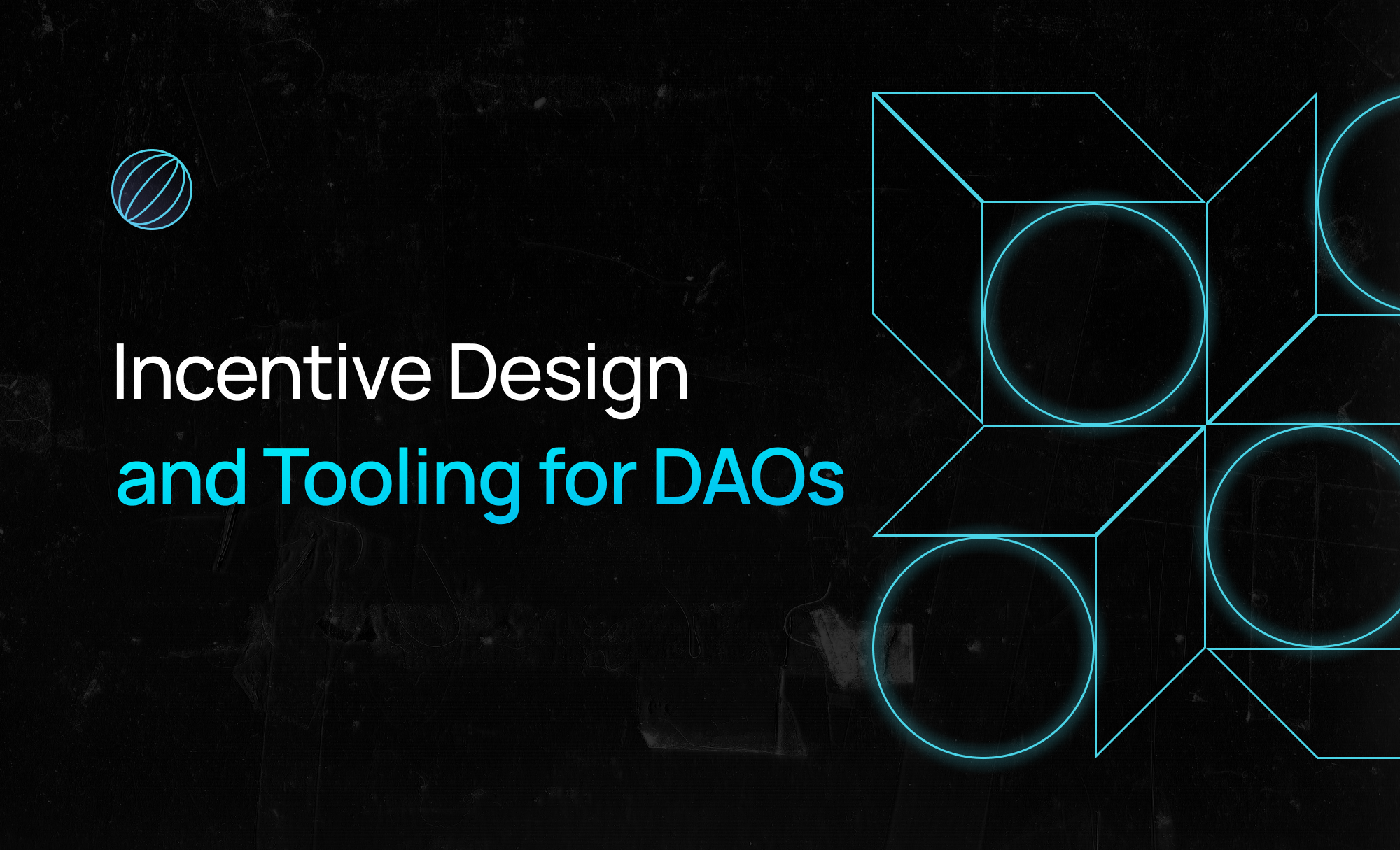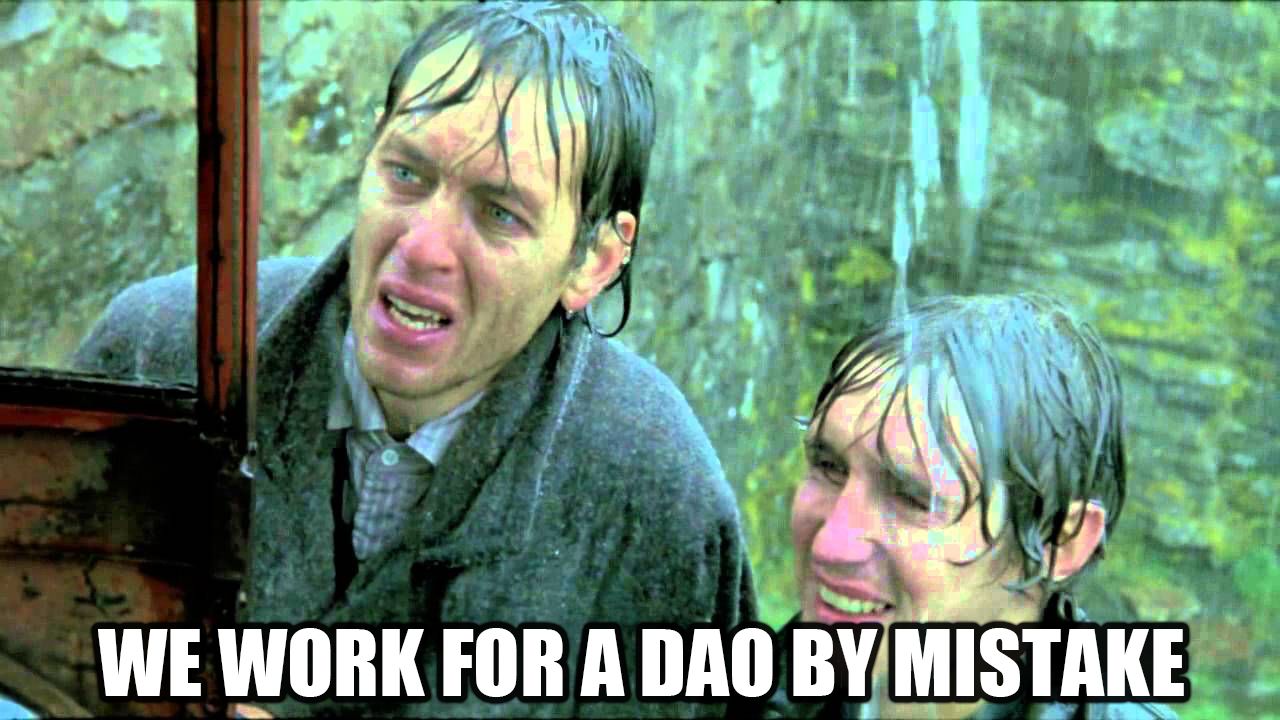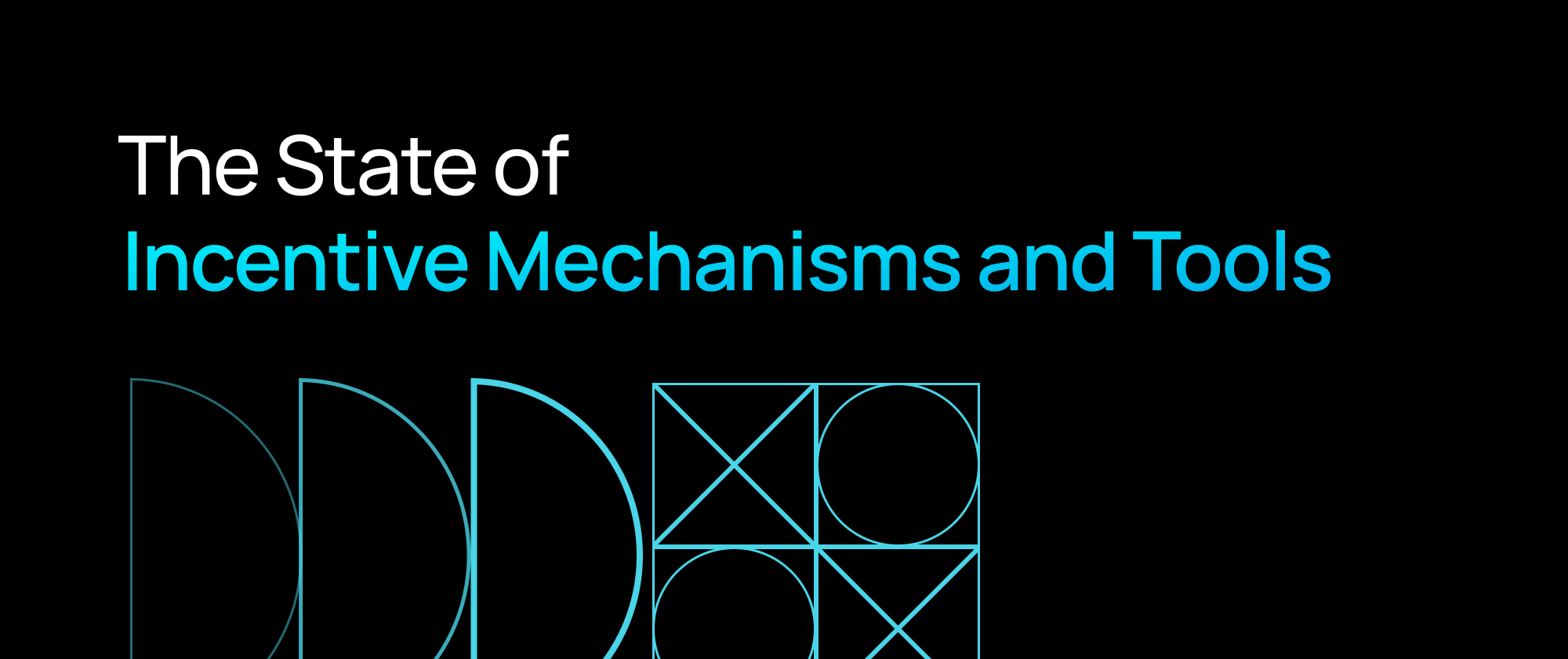Incentive Design & Tooling for DAOs
How to match a DAO's goals with the right incentive mechanisms to achieve them...
Aragon

DAOs aren’t going away, they are the new operating system for coordination and are fully extendable in form and function via their app layer: DAO tooling.
DAO tooling is as hot as hell right now 🚀 and, frankly, I can’t remember seeing anything as explosive as the innovation and creativity within this space.

However, this Cambrian explosion of DAO tooling brings challenges in the short term: even experienced DAO operators are finding it impossible to keep up with all of the latest developments and experimentation in the space, so spare a thought for Web3 noobs or those roped into DAO operations to help out...

One area where we can share some insight is incentive design. This is valuable for many reasons, not least because good incentives can increase participation rates and a sense of ownership in all DAO operations. A DAO that is leaving too much work for too few people is not in good shape.
A Simple Model for Incentive Mechanism Selection

The power and insight of this statement is fully realized in Web3. But how do we show incentives not yet implemented or designed, which is a more common occurrence as new DAOs pop up and new community models rise from NFTs and fractionalization? Oftentimes we find that people brought together through these shared passions might share little else, making incentive design even more important.
We think that there is an opportunity here to help DAO operators identify their most important objectives before trying to decide which incentives to use or tools to experiment with. For example, sometimes teams and DAO’s ask us about experimenting with Coordinape, but without much understanding of what it does or how it works. Coordinape is a brilliant tool, but a better question to ask is whether Coordinape works well at incentivizing the type of action or behavior you need right now.
We propose that DAO’s should first ask the following question:
What are my DAO's specific needs? And which incentive mechanisms address them?
The following table cross-references important factors such as decentralization, complexity and impact with the key tools or incentives being used by DAOs today. They have been chosen because they focus on the following important inputs:
- What are the most pertinent values or circumstances of your DAO?
- What is your relationship to the contributor to be incentivized?
- What is the nature of the work or activity to be rewarded?
Identifying your two or three most important factors can help to answer these questions and increase the speed at which you can identify the tools and incentive mechanisms most likely to help your DAO.
Here is the the table to help you identify and match characteristics with mechanisms:

Let’s dive more deeply into these factors and see why they might be important:
1. Decentralization of the Incentive
Does the DAO need a mechanism that is decentralized, or is some centralization compatible with your incentives?
This topic stirs great passion and while we all like the purity of decentralizing, sometimes "the perfect is the enemy of the good." There are excellent tools when you need incentives to be decentralized, and excellent tools when you can accept a more centralized approach. The answer for a well established DAO is likely to be different from a new one, as are the corresponding tools and mechanisms.
One other point to note is that some (de)centralization is a spectrum. For example, grants are sometimes distributed on a decentralized platform like Gitcoin, and sometimes by a decision committee in a hackathon.
2. Oversight of the Incentive
How much time and ability does the team have to oversee administration of the incentive mechanism?
This question can be very tricky. For example, bounties are an elegant solution for easily definable tasks with clear success criteria (e.g. Does the code run or not?). But a bounty needs to be defined, advertised, reviewed and rewarded, all of which takes DAO members' time and resources. It is possible that the gains from a simple bounty can be outweighed by the effort to define and execute it, but it is not guaranteed.
3. Reputation of the Contributor
How much connection or reputation does the potential contributor have in the DAO?
We long for the day when Rabbithole or others have perfected the on-chain CV, but until that time, different levels of participation or contribution zones might act as proxies for reputation.
We think it is possible to significantly narrow down this question to whether you need to know the reputation of a contributor or not. Anonymous, ad-hoc contributors can do many valuable tasks in a DAO without anyone knowing the slightest thing about them, which is one of the great things about permissionless Web3!
4. Definability of the Task
Is the task easily definable, and how can you determine whether it has been done or not?
Easily defined tasks can be packaged up and shared anywhere or with anyone, and often work well as bounties or grants. Other contributions are less well defined: someone may make many inputs over an epoch without them having been defined in advance, and the value realized only at the end. Whether the contribution can be defined is a good determinant for which mechanisms can be used.
5. Time Commitment to Complete
How much time does it take to do the required activity?
When you have been working in DAOs for a while, you realize the incredible value of people that consistently show up day after day. That said, someone spending a little time here and there really does add up. Guess what? You might need different incentives to attract one, or the other, or both.
6. Complexity to Complete
Is the work highly complex, either in the task itself or the skill required to get it done?
Highly complex tasks happen in DAOs every day and Web3 has normalized great achievements. But understanding the complexity involved can help you choose a good incentive mechanism: a genre-defining problem often requires a very different approach to something that just needs an extra set of hands.
7. Frequency of the Task
How often is the task or activity to be done? Is it just a one-off or is it repetitive and ongoing?
The answer to this is highly suggestive of mechanisms that might be suitable. For example, unique tasks might only need one-off incentives; repetitive tasks might need to scale so as not to become a drain on the treasury; and ongoing tasks might work better with mechanisms that encourage ongoing participation. Understanding which mechanisms work well in each of the examples above can save teams a lot of time when designing incentives.
8. Impact of the Task
Is the impact and visibility of this task wide or narrow?
DAOs (hopefully) pay for impact. But, incentives often work based on the visibility of such impact. We all know salt-of-the-earth DAO contributors who are the community's spiritual glue, but will their over-sized achievements be fully recognized in social graphs or mechanisms like Coordinape? These are really important questions when balancing different methods and approaches.
9. Value of the Task
Is this activity going to create value for the DAO?
If "Yes", then this needs to be incentivized appropriately and (hopefully) allow the team to realize some of the upside. If not, more discrete or packaged rewards might be more appropriate.
10. Urgency of the Task
How urgent is the activity to be done, relative to everything else?
If tasks are urgent, incentives should enable the rapid deployment of rewards, or be of a sufficient scale to attract talent. If less urgent, rewards might be packaged up into a cyclical reward mechanism or rewarded passively through algorithmic tools.
11?
There is also a possible 11th factor, which is when the reward needs to be paid. Big upfront commitments with the 'hope' of later rewards and recognition can be very weak mechanisms when work is plentiful and good contributors are scarce. Understanding if you can pay immediately, in tranches, or at completion might be a relevant and important factor for you and your DAO.
The trade-offs and synergies in these decisions can get quite complex. What we have shared in the table is non-exhaustive and fully hackable. Each context can be unique, even if the tools themselves are not. Finally, we want to note that we have primarily focused here on extrinsic and financialized incentive mechanisms, and will share more on topics of intrinsic motivation and incentives another time.

The State of Incentive Mechanisms and Tools
Now that you have identified your key needs and the mechanisms that might work well, we provide a brief overview of each. As noted earlier, the pace of DAO tooling innovation is inspiring and this list is not exhaustive, but we do hope it helps to get you started.
POAPs & NFTs
- Key benefits or use cases: Allow access and gating, build reputation, low cost.
- Challenges or limitations: Non-financial, work only in specific use cases.
Proof of Attendance Protocol (POAP) creates NFTs that signify your participation or attendance in activities. They are fast becoming a way of recording your working life and building your on-chain CV. Rabbithole.gg uses NFTs in a similar manner and rewards you for completing quests or undertaking specific actions. And most of us know how well Mirror works at creating ownership and access at the genesis of ideas or new publications. All three are becoming core components in the ecosystem to align incentives and encourage deeper exploration.
Tool providers: POAP.xyz , Rabbithole.gg, Mirror.xyz
Tipping & Tips
- Key benefits or use cases: Real time recognition, good for unplanned value creation.
- Challenges or limitations: Very centralized, good when targeted but does not scale well.
Tipping might be viewed as absurd in most of the non-US world, but in the context of DAO’s, tipping can be a very valuable and healthy mechanism to help a DAO scale. Tips are often used more like airdrops (care-drops?) and their superpower is that they can reward value creation very rapidly, especially when unplanned but easily identifiable. Also, tipping requires zero reputational knowledge of individuals, allowing anyone in a DAO to contribute and be tipped.
While it remains a centralized process (i.e. the tipper has all power) peer-to-peer approaches to tipping in the Bankless DAO and TEC Praise system are starting to emerge. Our favorite example is the curation mechanism at Forefront. Each day, DAOists curate articles for the Forefront newsletters and communications in a shared Discord channel, with the best receiving tips. This creates a virtuous participation circle and shows what is possible when very simple mechanisms are used wisely.
Tool providers: Tip.cc , Collab.land, Coinvise
Algorithmic Network Analysis
- Key benefits or use cases: Decentralized, algorithm removes manpower needs.
- Challenges or limitations: Tech solution - requires dev experience, algorithm brings new challenges.
Sourcecred is an algorithmically objective network analysis system. Simply put, it enables participatory actions and recognition workflows to be created such that the algorithm makes calculations around how value has been created and accrued. Think of it as a bot keeping score of actions, impressions and other activity in Discord, Github and community forums like Discourse. The greatness of this system is that it removes much of the daily administrative burden for DAO operators and is decentralized - no-one is making decisions about allocation. On the flipside, detractors would say that, used unwisely, any algorithm can become a weapon of math destruction, and that without human oversight it is possible for people to “farm” cred. However, if you have a thriving community with a few developers that can keep an eye on it, it's actually a pretty cool and valuable tool.
Tool provider: Sourcecred
Coordinape
- Key benefits or use cases: Decentralized, prosocial, uncapped rewards (up to pool total).
- Challenges or limitations: Uncertainty of reward for contributors.
Coordinape is the darling of the ecosystem right now and rightly so - it represents many of the best elements of Web3, decentralization and is a true digital native solution.
Coordinape is a decentralized, pro-social recognition tool that moves recognition from leaders to teams. It works by allocating tokens to each participant, who award them to their peers during 'epochs'. At the end, an individual's proportion of tokens is converted into their proportion of financial rewards allocated from the treasury. There are many powerful mechanisms at play, such as promoting the acts of giving and recognition amongst teams, as well as removing capped individual recognition in favor of uncapped rewards from across the whole pool. It’s no wonder that so many DAOs - including some of the largest and most successful - are already using it.
Tool provider: Coordinape
Bounties
- Key benefits or use cases: Discrete or one-off tasks, easily definable completion, doesn't require reputation.
- Challenges or limitations: Brings overheads, not good for work that is hard to define.
We think that bounties are a very meaningful part of the ecosystem and are likely to grow in importance over time. The reason for this is that most legacy work practices have a high focus on 'roles' - essentially 'employment' - while DAOs are disassembling work into individual tasks or activities to be done from the crowd. This atomic view of tasks is likely to become a DAO superpower as the mechanisms for effectively executing them at scale begin to emerge.
Bounties have their own superpower, in that they work exceptionally well when the tasks are relatively easy to define and the success criteria are well known. But this is not the only context, and we are inspired by the example from Badger DAO who have turned their entire intern program into a bounty. Earning a living as a Web3 'bounty hunter' is now a viable option via Gitcoin and impressive growth hacking mechanisms like Layer3, or simply signing up to this bounty newsletter.
Tool providers: Gitcoin, Layer3
Grants
- Key benefit or use cases: Large complex tasks, pay for completion, attract new participants.
- Challenges or limitations: Not great for small tasks, high operational effort.
Grants are becoming a staple of the industry for large scale, complex, or highly specialized needs. They are essentially operating like a contingent work model for DAOs, inviting in new cross-functional teams or specialists to support the activities of the core contributing team. They are a way to attract new or unique capabilities and allow the DAO to scale and build more quickly than otherwise possible.
Thinking of composability, we think grants might be a key step towards creating DAO to DAO interlocks and collaborations for highly complex tasks. Grants programs are, however, complicated and have a significant overhead for the core teams in terms of their management and administration, not only in allocating the work, but in ensuring milestones and final deliverables are met.
Tool providers: Gitcoin
Streams
- Key benefit or use cases: Reward ongoing commitment, real time - pay by the block.
- Challenges or limitations: Does not make sense for small discrete tasks.
Streams are likely to become the salaries of Web3 because they have many of the same unique properties but provide a more digitally native and logical solution. These programmable cash flows can deliver payments block-by-block to contributors or other parties. For this reason, they are a great way to reward long term contributors and break the “monthly payment” model institutionalized in much of Web2.
The limitation of streams might be that they operate like salaries, rewarding contributors without the direct and visible link to value creation in the way some of the other mechanisms provide.
Tools: Superfluid, Sablier
KPI Options
- Key benefit or use cases: Reward over-achievement, shared upside for contributors, pay for results.
- Challenges or limitations: Result needs to be defined upfront and be publicly verifiable.
KPI options are an exciting mechanism and fertile ground for experimentation. They provide the ability to incentivize results and output in binary and non-binary ways, with the potential to scale rewards proportionately to impact.
One example could be to incentivize via an option that becomes deeper 'in the money' as the impact generated by the work increases. This is a very powerful model for DAOs because it allows participants to truly share in the upside of their work in ways not fully expressed in many legacy institutions or corporations.
Of course, KPI options bring their own complexity, require highly specific design upfront, and are highly reliant on having a publicly verifiable measure against which the contract can be executed.
Tools: UMA
In addition, a number of excellent tools exist to help payment of these rewards to reach contributors. These include but are not limited to: Disperse, Parcel and Utopia. There are also exciting developments and experiments taking place across the ecosystem, which are beginning to explore powerful new functions by integrating different tools, blurring the lines between the mechanisms and tools.
In closing, we are sharing this here as a guide to empower you to explore some tools that might be valuable and not to restrict your thinking about what is possible. Badger’s internship is a bounty, but others might reward internships via Coordinape or Streams or something else, and all would be equally valid given the unique DAO contexts. This is one of the best qualities of Web3: the ability to reimagine and redefine how we want work to work. Hopefully our sharing here has given you some inspiration to reimagine what’s possible.
Finally, we’d love your feedback to iterate and improve, and to learn together. If you’re a DAO tooling provider who thinks they should have been included, sorry we missed you and please reach out; we’d love to connect and learn together, and help introduce you to people in our network that might like to try your product!
--
Ben Perez is Head of People at the Aragon Association. You can read more about Ben here and connect / collaborate / chat more @b3nnn21 on Twitter.
To stay up to date with more content like this, follow @AragonProject.
--
Aragon is building the future of decentralized governance for Web3 communities & organizations. Deploy a DAO on Aragon Client or Aragon Govern, manage your community on Aragon Voice, resolve disputes in Aragon Court and run enterprise-level votes on Vocdoni, all within our open-source stack. See the latest at aragon.org, subscribe to our monthly newsletter, join the conversation on Discord, or follow us on Twitter.
Docs | YouTube | Telegram | Github | Reddit | Linkedin | Forum
Subscribe to The Eagle for weekly news on the Aragon Network
